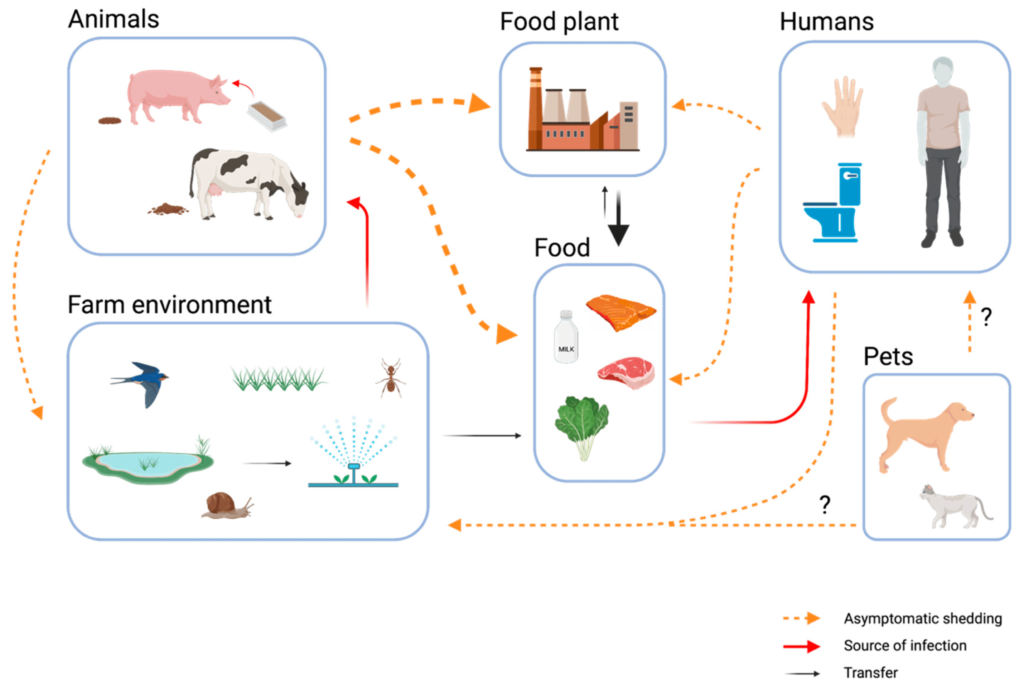
In current years, there was a concerning fashion in the upward push of Listeria outbreaks associated with organised-to-consume (RTE) meals.RTE foods and ensuring compliance with meals protection These outbreaks have raised questions about the protection of RTE elements and the demanding situations of stopping Listeria contamination at a few degree within the meals manufacturing and distribution chain. Listeria will increase if right temperature control and sanitation practices are not maintained sooner or later of the manufacturing and distribution chain. Understanding the elements contributing to the increase in Listeria outbreaks in RTE substances is vital for addressing meals protection troubles and protecting public fitness. In this article, we discover the upward push of Listeria outbreaks in RTE ingredients, identifying key factors and discussing strategies for prevention.
1. Complex Supply Chains:
The modern food supply chain is complex and interconnected, with RTE ingredients often passing through a couple of ranges of production, processing, and distribution before attaining consumers. Each step inside the delivery chain provides opportunities for Listeria infection, from raw ingredient sourcing to very last packaging and distribution. The globalisation of food manufacturing and distribution has in addition complicated the difficulty, as RTE meals can be sourced from multiple providers and areas, growing the danger of infection and introducing demanding situations for traceability and keeping in mind efforts in the event of a deadly disease.
2. High-Risk Food Categories:
Certain RTE food classes are especially vulnerable to Listeria infection due to their composition, processing techniques, and garage conditions. These high-hazard food categories consist of deli meats, hot dogs, soft cheeses, smoked seafood, and prepackaged salads, among others. RTE ingredients that undergo minimal processing or require refrigeration for the garage are mainly vulnerable to Listeria increase if proper temperature control and sanitation practices aren’t maintained at some point of the manufacturing and distribution chain.
3. Listeria Persistence:
Listeria monocytogenes, the answerable for listeriosis, is for its ability to live to tell the tale and thrive in diverse, such as refrigerated environments and coffee-moisture meals products. Unlike many foodborne, Listeria can grow in refrigeration and resist harsh conditions inclusive of excessive salt or acid levels, making it a venture for meals management in RTE ingredients. Listeria infection can occur in meals processing centres, systems, and surfaces, leading to ordinary outbreaks in spite of sanitation efforts.
4. Vulnerable Populations:
Certain populations are at better threat of listeriosis and its extreme complications, inclusive of pregnant girls, newborns, the aged, and people with weakened immune systems. RTE foods infected with Listeria pose an enormous risk to those susceptible populations, as even low levels of contamination can lead management software control software to extreme contamination or dying. Pregnant women are liable to, as the infection can result in miscarriage, or severe contamination in newborns.
5. Regulatory Challenges:
Regulating RTE foods and making sure compliance with food protection standards present sizable challenges for government agencies and meals enterprise stakeholders. The complexity of the meals delivery chain, coupled with the dynamic nature of foodborne pathogens along with Listeria, call tracking software for robust regulatory frameworks, surveillance systems, and enforcement mechanisms to hit upon and reply to outbreaks efficiently. Regulatory groups have to collaborate with food producers, processors, and outlets to put in force preventive controls, behaviour hazard assessments, and reveal compliance with food safety policies.
Prevention Strategies:
Preventing Listeria outbreaks in RTE meals calls for a multifaceted method that addresses chance factors throughout the meals production and distribution chain. Some key prevention strategies consist of:
· Implementing stringent sanitation practices in meals processing centres to minimise Listeria infection.
· Monitoring and controlling environmental conditions, together with temperature and humidity, to prevent Listeria boom in meals processing and storage facilities.
· Enhancing traceability and contact monitoring software program structures to facilitate rapid identification and removal of contaminated RTE foods from the market.
· Educating meals handlers and consumers approximately safe meals managing practices, along with proper refrigeration, storage, and reheating of RTE meals.
· Conducting ordinary testing and monitoring of RTE foods for Listeria infection to discover capability risks and save you outbreaks.
Conclusion:
The upward push of Listeria outbreaks in RTE foods underscores the importance of vigilance, collaboration, and proactive measures to meals safety and protect public fitness. Through the complicated demanding situations associated with RTE food manufacturing and distribution, stakeholders can work together to mitigate the threat of Listeria contamination and save you from outbreaks within the destiny. Continued research, innovation, and funding in food protection tasks are important for making sure the safety and integrity of RTE ingredients and keeping consumer self belief inside the food delivery.
Leave a Reply